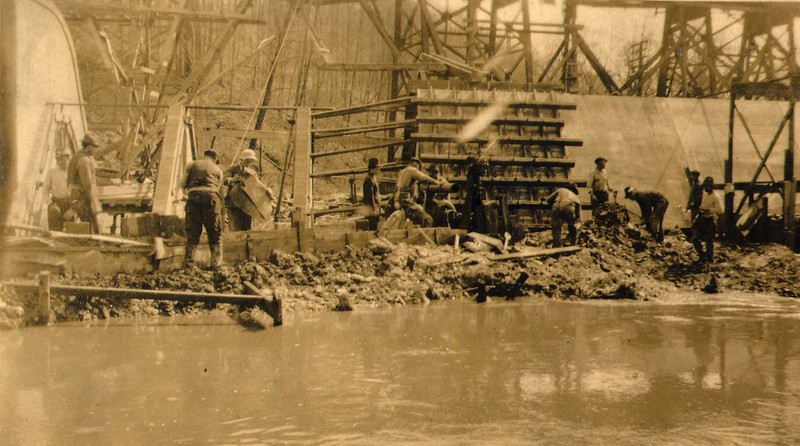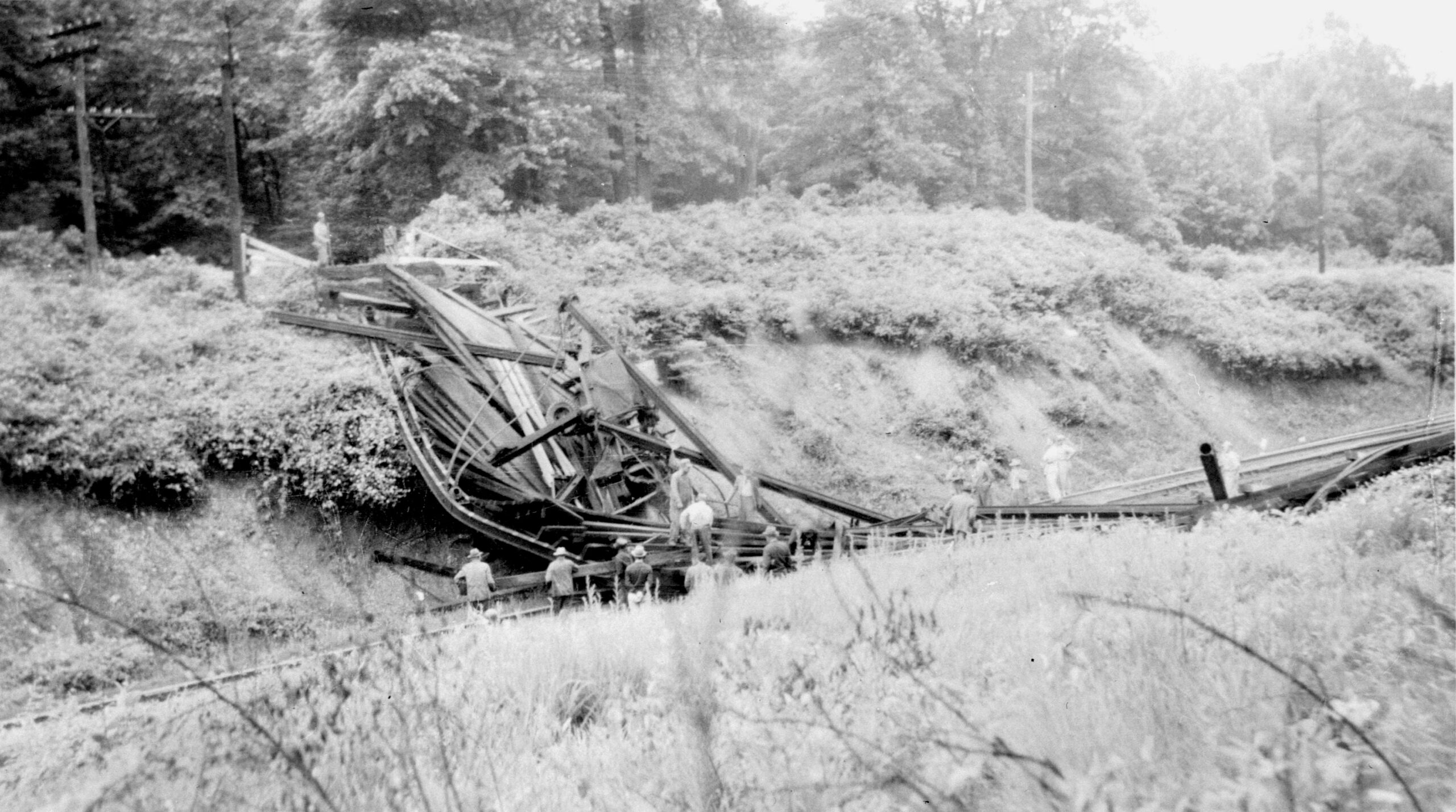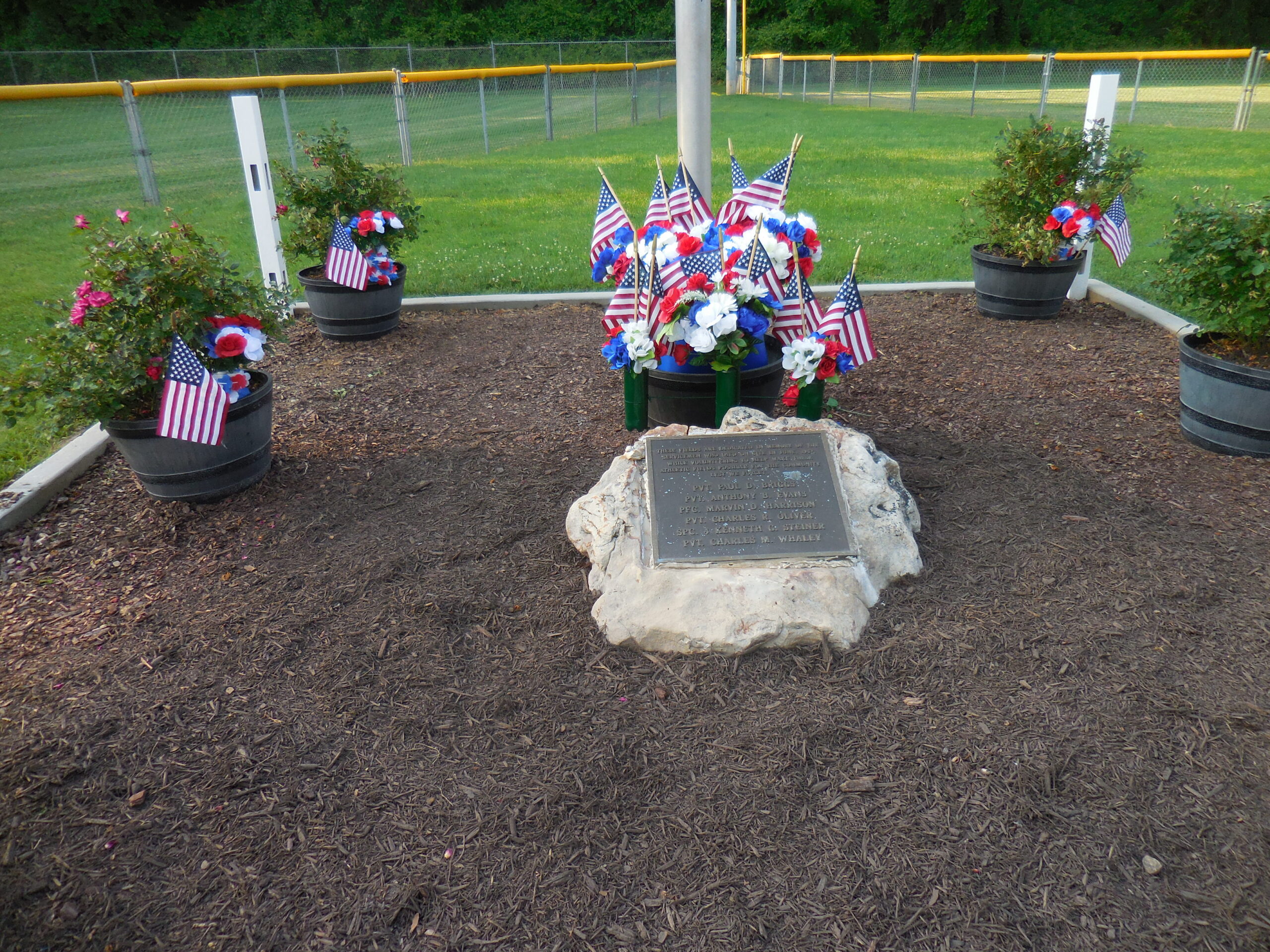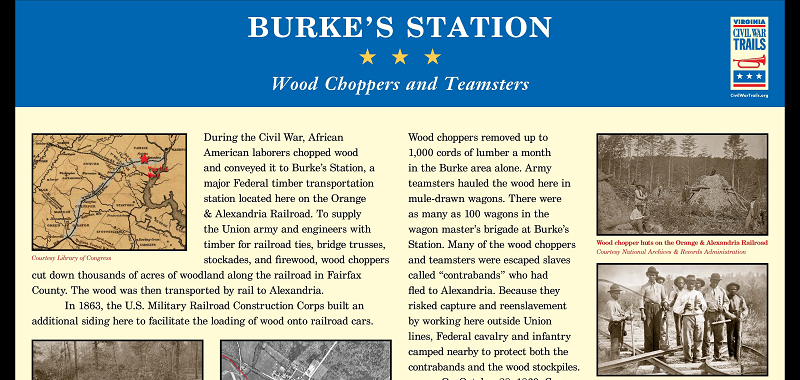By Mary Lipsey and Debi DeLoose. In the late 1800’s an iron truss bridge was…

A History of Lake Accotink-Part 2
(In case you missed it, “A History of Lake Accotink- Part 1” can be found at https://burkehistoricalsociety.org/a-history-of-lake-accotink-part-1/)
Where did we leave the story of Lake Accotink? Ah yes. In 1922 the first dam that created the first Lake Accotink was rendered unusable (that happens when you blow a big hole in it).
And we had a Fort Humphreys, not a Fort Belvoir. In the 1930’s President Franklin D. Roosevelt was persuaded to rename Fort Humphreys as Fort Belvoir. The name Belvoir, a French word meaning “beautiful to see” had originally been used by Colonel William Fairfax to describe his colonial plantation.
Keep in mind that in the 20’s and 30’s the population of the area surrounding what would become Lake Accotink Park was much sparser than it is now. The homes, schools, shopping areas and many of the roads we now take for granted did not exist. Even so, the area now known as Lake Accotink Park was used for recreation by the neighbors.
The late Bill Sheads, of Burke, shared a story of his adventures at Lake Accotink circa 1937 in an oral history that is part of Look Back at Braddock District. http://braddockheritage.org/
When I became the ripe old age of thirteen, I got my driver’s permit which one could do at that age with parental consent. Many times on Sunday, following Sunday school, my dad would let me take one of the logging trucks, and along with a couple of my cousins and friends from church, we would drive the CCC fire road and the old railroad bed to the area of what is now Lake Accotink. There we would fish or maybe scout around the old blown-out WWI Accotink Creek Dam. On occasion, we would go inside the undemolished section of this hollow concrete dam.
In another oral history interview, on the same website, Aubrey Chason relates events that occurred around 1939.
I don‘t think we ever were brave enough to go up on the trestle. I think maybe we weren‘t dumb enough to up on the trestle. But I do remember that the place was overgrown with vines and very heavy foliage. And the dam, I realized they blew it up to make sure that it didn‘t break and flood the trestle out. But it‘s a pleasant place. There was nothing to disturb us there except the trains going by. And we would skinny dip there, and just have a good time. I think in those days it would be just the guys. Come on, they were driving a big train. How can they take time to admire these little boys skinny dipping and toot their whistle? But they’d not only toot their whistle, but stick their head out the cab and yell when they would go by.
The land that was covered by the Lake created in 1919 was not, at that time, owned by the Federal government. There may have been a leasing agreement. The land was later purchased by the government in 1943 from Dr. George Bolling Lee and from Mrs. Robert E Lee (Mary Pinkney Lee, second wife of RE Lee III).
Ft. Belvoir expanded greatly with the outbreak of WWII. The current dam was built in 1943, again, to form a reservoir for Ft. Belvoir. The dam created the current lake which has a drainage area of approximately 30 square miles.
Below is information shared with the BHS Board by Merlin “Mac” McLaughlin who grew up where Hidden Pond Nature Center is today. See https://vaaccotink.weebly.com/1945-pics-and-notes.html
…There had been a dam in this approximate location built there during World War I to provide an emergency water supply for the DC area, but when that war was over the government dynamited a gap in that dam so as to not have to provide any further maintenance of the dam or lake. And the original lake bed became a thickly-forested area.
The Southern RR then had passenger trains. There was a passenger “Ravensworth” train stop located on the north side of the tracks maybe a quarter-mile west of the RR trestle. The passenger shelter was a simple 3-sided shed-type structure, fully open on the side of the tracks, with a bench. A woods-road departed from Rolling Road at its junction with Center Road and ran toward the Ravensworth train stop. My dad worked for the government for a short period of time, and often used that train stop during the late 1930’s. That train stop disappeared due to non-use, probably about 1940 or so, but the said woods road was our primary access trail to get to that dam in the shadow of the RR trestle.
I (and a few other kids) used to occasionally visit the old previous dam and swim in the gap between the two sections of the dam, as there was a pool there with pretty good depth. And we occasionally were observers of the construction activity during WWII as the remains of the old dam were demolished and the new dam was built, again to be an emergency water supply for the DC area.
The Corps of Engineers was in charge of monitoring and patrolling the lake after the new dam had been built. I went into the Army in mid-1945, but before then several buddies and I occasionally made a couple-mile trek to go swimming in the new lake. We had made an opening beneath the security fence that surrounded the lake to gain access. Whenever we heard the sound of the patrol boat we got out of the water, crawled under the fence and waited in the woods until the boat left that area. As I recall, we went swimming there that year (1945) as early as March 31, on an unseasonably warm day (although the water was obviously still quite cold).
The property remained with the army for almost two more decades. In the 1960’s the army found a new owner for the Lake. And that is a story for another day.


